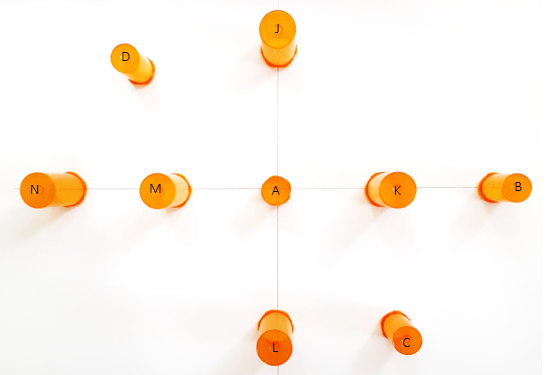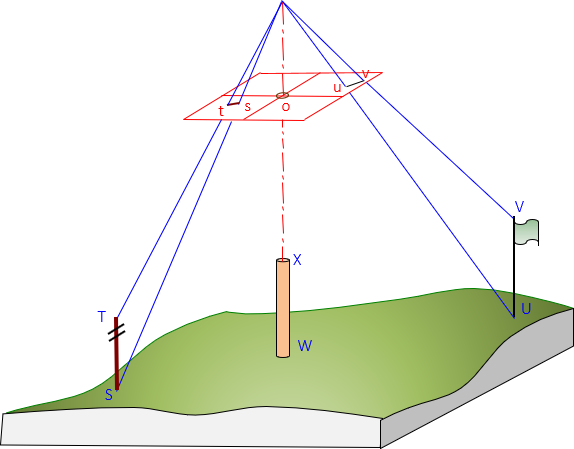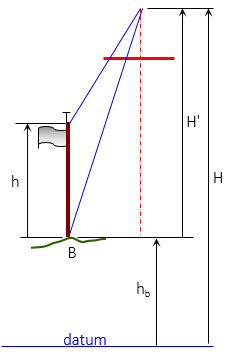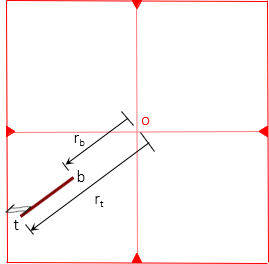5. Relief Displacement
Figure C-9 is an overhead picture of nine vertical cylinders on a flat surface. Cylinders A-D are the same size; J-N are 25% wider and taller. The picture was taken centered on cylinder A and approximately 30 inches above.
 |
|
| Figure C-9 Overhead Photo of Cylinders |
On the picture we see that:
- Cylinder A is the only one whose top is directly over its bottom, the other cylinders lean away from A with their tops displaced outward.
- Cylinders J and L are approximately the same distance from A; their tops shift the same amount but in opposite directions; cylinders K and M behave similarly.
- Cylinder N is twice the distance from A as M; its top shifts about twice M's.
- Cylinders B and N are the same distance from A; B is shorter and its top shift is slightly less than N's.
Relief displacement is the radial offset from the principal point due to object height, Figure C-10. The amount of displacement is a function of an object's height and where it appears on the image.
 |
| Figure C-10 Relief Displacement |
Relief displacement can be used to determine object heights, Figure C-11. The top and bottom of the object must be visible on the photo and the top must be vertically above the bottom.
 |
 |
| (a) Object | (b) Measurements |
| Figure C-11 Height from Relief Displacement |
|
Height is determined using Equation C-5
 |
Equation C-5 |
|
h - object height above ground |
|